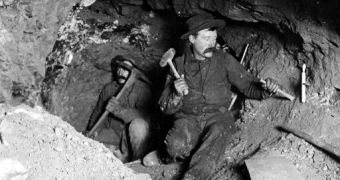2.8 kilometers (1,7 miles) of rock separate Candidatus Desulforudis Audaxviator (CDA) from the outside world, depriving it of light and oxygen to feed on. But the bacterium adapted to its environment and started using the radioactive decay of the uranium around it as a primary source of energy. It also developed genes to help it synthesize carbon and nitrogen from rocks. Researchers say the cell is able to extract everything it needs from its environment, as the two chemicals are the building blocks of life as we know it.
CDA was found "entrenched" deep underground, in several liquid-filled tiny cracks in galleries of the Mponeng goldmine, with no apparent source of food or energy. Photosynthesis was impossible due to the absence of sunlight and oxygen conversion was out of the question in the sealed tunnels. Dylan Chivian, at the Lawrence Berkeley National Laboratory in California, studied the DNA samples brought back by the science team, hoping to find several different organisms living underground. To his surprise, he found that 99.9 percent of the recovered DNA belonged to a single species of bacteria, one he had not previously encountered.
The discovery was highly unusual, as several different types of bacteria usually clog together in cultures, which helps them become more adaptive to possible environmental changes. NASA Astrobiology Institute Director Carl Pilcher said "The fact that the community contains only one species stands one of the basic tenets of microbial ecology on its head." The fact that NASA took interest in this discovery may hint at the "bright" future CDA has in front of it.
Because it is capable of enduring such harsh conditions, the space agency thinks that the bacterium could also survive buried under the rocks of Mars or on Enceladus, Saturn's sixth largest moon. The fact that it does not require sunlight to work could even make it an ideal biological agent to be implanted on distant planets such as Pluto, where light is very dim. The main problem with this is that CDA lived in temperatures of about 60 degrees Celsius (140 degrees Fahrenheit) and scientists are still unsure whether it could withstand the chilly temperatures in our solar system.

 14 DAY TRIAL //
14 DAY TRIAL //